skate. came out around the time that EA tried to use the right analog stick on controllers to do everything. Adding that to a skateboarding game doesn't make the title a pick-up-and-play experience. While some people bailed out because of the time needed to learn the new control method, a sufficient number of people stuck with it long enough to make the game into a series that spans three mainline titles and a few offshoots. That series only lasted for one console generation on the Xbox 360 and PS3, and while backward compatibility on the Xbox platforms has allowed a few of the titles to be playable, people have been clamoring for a new entry in the series. A while back, people got their wish when a new entry in the skate. series was announced, this time for the PS5 and Xbox Series consoles as well as the PC. We got some hands-on time with the game before it releases to Early Access in the middle of September.
The first thing you do in the game is choose your control scheme. Despite the naming conventions, both options are relatively the same in that you're still using your right analog stick to control your board and board tricks. The major difference lies with locomotion. The classic theme uses the controller's face buttons to brake and kick for acceleration, where mashing on the button to go or holding it down produces the same result. The new control scheme maps those actions to the left analog stick, with the idea that you'll keep your thumbs on both sticks at all times and only move to the face buttons for menu navigation. Both schemes work fine and can be swapped out at any time. For PC players, the game only uses the gamepad with no options for keyboard and mouse control.
After creating your character with the good assortment of options for the major categories, you're sent to a small island for your tutorial. The tutorial session gives you the basics on things like grinds and flip tricks and the ollie, and unlike some tutorials in other games, this one isn't overly strict. Failure is fine, and there's little pressure on getting things perfectly right. This is where skate. veterans will feel at home, and newcomers will discover why the series was so loved. The controls are responsive, and it's easy to understand how to pull off some of the moves, since the mapping makes sense, such as pulling back and flicking forward for an ollie and doing the reverse for a nollie, for example.
Finish the tutorial, and you'll be sent over to the city of San Vansterdam, which has been the setting for every game in the series since the beginning. The location has received a huge glow-up, as it is now huge and separated into several different districts. You can easily ride from one place to another on your board like any open-world game, but you can also take the bus to warp where you want to go. Every surface has been molded to make skating accessible, but things still make sense. Unless you drop a ramp into the world, you aren't going to see one present and feeling out of place among the benches. This makes the fictional city feel like a real place versus one that was specifically tailored for skating.
For the most part, you're encouraged to roam the city and skate around either solo or with some friends in tow. There's no large overarching goal to aim for and no deep lore to uncover. This is a game that's all about having fun and hanging out, similar to how the multiplayer lobbies were for any of the old Tony Hawk's Pro Skater games. For those looking for some structure, the world is filled with loads of different challenges. Completing these challenges, either solo or with a crew, earns you reputation and coins for that area, and the reputation and coins are used to unlock more cosmetics and more challenges to keep you going. It's an enjoyable loop to be stuck in, especially since so few of the challenges are timed, and every one of them can be replayed multiple times until you hit all of the goals for the challenges.
The large playground that is the San Vansterdam is awesome, but there are three major changes that greatly affect skate. The first is the inclusion of a large number of people in the city. The game is designed to be an always-online multiplayer experience, and each instance of the game is designed to have a total of 150 people skating in any district at any given time. Collision is turned off when it comes to you versus other people, so you aren't going to see tons of people purposefully knocking each other down. That keeps the experience stress-free. Considering that the game aims for a more laidback experience with skating, the higher population count allows you to sit back and watch others skate by if you aren't feeling inclined to ride. The option to warp to any spot where people are congregated certainly solidifies that notion.
The second major addition to the game is parkour. You could get off your board to move around and jump and climb over ledges. However, some vertical surfaces are climbable, and the game briefly acts like Assassin's Creed as you swiftly jump from ledge to ledge. This newfound ability ultimately serves the art of skating, as now the tops of tall buildings become new playgrounds to skate on. You'll often climb, even if the idea of vertical movement in a skating game initially feels weird.
Finally, skate. features stunts. The lore states that a new tech company has given every skater the ability to become invulnerable, so you can't get hurt by bailing or getting hit by a car — or even falling from the tallest building in the city. As a result, the game lets you do a running jump and even glide down as if you had a wingsuit. Leaping from that high also lets you bust out your skateboard for any attempts or land safely enough for a grind or hit a ramp for good measure. In addition, the nigh invulnerability erases the usual penalty for bailing on your board. In fact, bailing counts as a move that extends the combo. This then negates the risk/reward system from other extreme sports games. It's a strange effect that takes loads of time to come to grips with.
The inclusion of parkour and stunts in particular significantly transforms the vibe of the game, even more so than the inclusion of large groups of people inhabiting the city. These elements change the game from being relaxing to being goofy, so this iteration of skate. feels closer to a game like Tony Hawk's Underground, but it doesn't go as far as having lots of Jackass-style stunts with shopping carts and pranking people. The addition of these things still feeds into the game's overall feeling of fun and doing nearly whatever you want, but it runs the risk of turning off those who liked the more grounded nature of the earlier titles.
Even at this early stage, the presentation is quite good. The environments are bright, and they go for simplicity with an eternal sun. The texturing looks good but simple enough to make everything readable. The characters are slightly stylized instead of realistic, and it works with the game's more playful attitude. When it comes to the audio, the main highlight is the soundtrack, which has a ton of great songs covering a number of genres. There's a healthy helping of rock and rap, and some of the more surprising tunes to hear are from the Roaring 20s era and regional stuff from Mexico. It's an eclectic mix of genres, and there's an exciting promise of more songs arriving over time.
While the arrival of the series on the PC is awesome, there is one drawback. Thanks to the game's anti-cheat software, EA Javelin Anticheat, the game cannot be played on the Steam Deck. If you were to try, you'd get a pop-up stating that the game will shut down because it is not supported on Steam Deck, Wine, and Proton. Considering that this is a recent decision from EA for anything with an online multiplayer component, there's no telling if and when this decision may be reversed. It's also important to note this not just because the Steam Deck is a popular device but because there's a recent trend of people talking about the end-of-life date for Windows 10 coming up soon. Those people are looking for viable PC gaming operating system alternatives that aren't Windows 11, so that's why Linux is getting more talk now. In the meantime, if you're a PC player, consider this to be a Windows-exclusive title.
At the moment, skate. looks rather promising. The idea of this being a live service game has some big pros in the form of constant updates and cons in that you need to always be online to play. The move to being a goofier, more playful title might not gel with purists, but it differentiates the game from other titles. The most important parts — the controls and general feel of skating — remain intact, and that will be good enough for most fans. skate. hits Early Access in about a month, so try out the game when it drops.
More articles about skate.


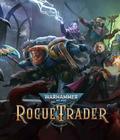
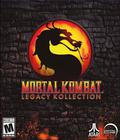
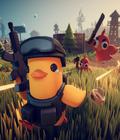


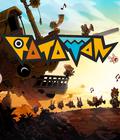
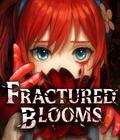

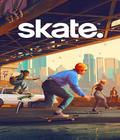 Set in the vibrant city of San Vansterdam, skate. is a multiplayer skateboarding destination offering a massive open world where players discover unique skate spots, land insane tricks and connect - or compete - with friends online.
Set in the vibrant city of San Vansterdam, skate. is a multiplayer skateboarding destination offering a massive open world where players discover unique skate spots, land insane tricks and connect - or compete - with friends online.







































